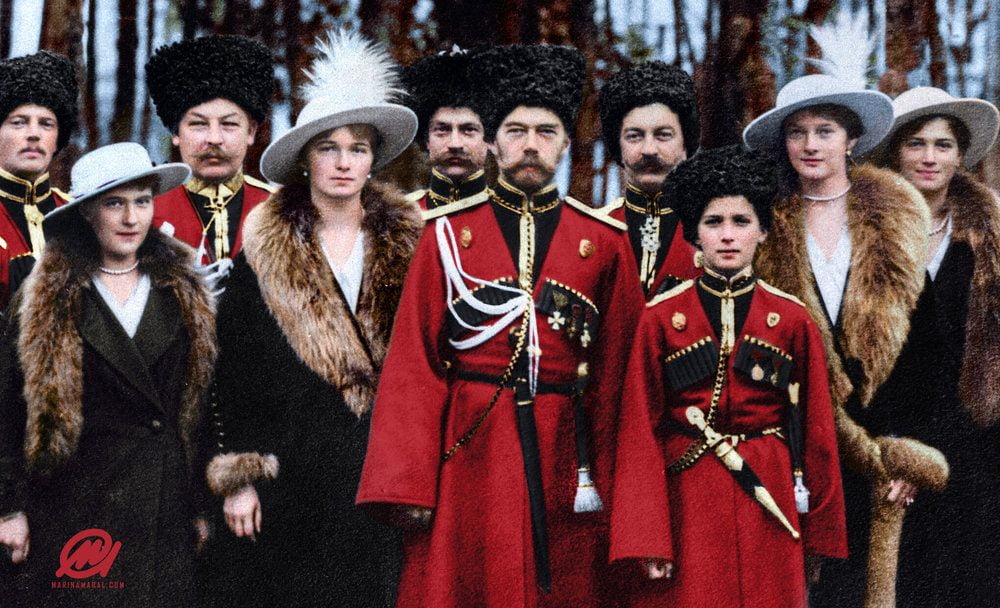The Cossacks are a group of predominantly East Slavic-speaking Orthodox Christian people. They originated in the Pontic steppe north of the Black Sea. In the 2002 Russian Census, there were 140,028 people claiming Cossack ethnicity. That number fell to 67,573 in the Census of 2010.
The Cossacks served as part of the Soviet Army. But after World War II, the units were disbanded. And then during the Perestroika era of the Soviet Union, descendants of the Cossacks began to revive their national traditions. And in 1988, the Soviet Union passed a law allowing the reestablishment of former Cossack hosts.
Origin of the Cossacks
The word Cossack derives from the Turkish word “kazak”. It translates to freeman or adventurer. The first recorded use of the word was made by Italian trading colonies along the Black Sea in the 14th century. The Italians used it to refer to the bandits and freebooters operating in the hinterland.
![]()
In the beginning, these lightly armed horsemen operated as independent groups. This adds more to their culture and popular image of free adventurers.
The modern Cossacks trace their heritage to these horsemen appearing in southern Russia and Ukraine. The two of the largest groups are the Zaporojie and the Don Cossack groups in the 16th century. They played a large role in rebellions in the 17th and 18th century in order to maintain their independence. They also helped Russian Czars expand their territory.
They fought against each other
While they helped fight off invaders, Cossacks also fought against each other. Historian Albert Seaton divides the Cossacks in two groups. The first one is the “town Cossacks”, and the second is the “free Cossacks”. The former had a semblance of institutions. The free Cossacks were conglomerations of fringe groups often divided on basis of their language.
From a historical perspective, the free Cossacks defined the legacy of the Cossack people. They were expert horsemen, allowing them to make fast raids and escape faster from the garrison towns.
They helped in the battle against Napoleon
Don Cossacks fueled the rise and ascendancy of the Russian Empire in the 17th century. Their willingness to fight under the Tsar and martial aptitude allowed them to participate in far-flung military campaigns. They operated between Black Sea and the Baltic Sea.
![]()
The Don Cossacks also played a pivotal role in harassing the French army trying to invade Russia. While Napoleon was fighting the traditional Russian army, the Cossacks applied the scorched-earth policy. The actions forced the French force to rely on paltry and dangerously exposed the supply lines.
Because they were highly mobile, the Cossack horsemen could easily make mounting raids against French people in the Battle of Borodino.
Back to Life
After World War II, Cossack units were disbanded. And they were “practically dead” until the perestroika era. During this period, atamans, the traditional leaders of Cossacks began a revival in southern Russia regions with a distinctly political flair. Their nationalism was coming out of Moscow at the time.
Their communities opened special training schools. They were allowed to patrol streets in some Russian cities and served as auxiliary police force.
And during Putin’s era, Kremlin promotes even more conservative values. This plays right into the Cossacks tradition. They emerged as avatars for all that is Russian. Some historians compare them to the samurai in Japan or the cowboys in America.
Equipment and Training
Expert horsemanship is an essential part of the Cossack culture. Their equestrian skills and adeptness is what makes them special warriors.
Their equipment included lance, saber, and sometimes a bow. By the late 19th century, their attire compromised of silk pants, giving them more ordinary look. They also wore a tunic, a standard Russian infantry greatcoat, forage cap, and sturdy leather boots.
Family Life
The family life values of the Cossacks are simple, rigid, and very traditional. They are very different than those of the families in the contemporary Western culture.
For example, men build the home and provide an income. Women, on the other hand, take care of the family and provide for the children and household. The culture of the Orthodox Christianity is the bedrock of the beliefs.
Cossacks in the rural area have more children than most people in Russia. They live in large clans of extended family. They are led by an elder patriarch, usually the grandfather. He takes on the title of Ataman.
When men fight in wars far from home, women take the role of family leaders. They are also called to physically defend their villages and towns from enemy attacks.
The Decline of Cossacks
Like many military societies in history, there was a natural decline for Cossacks. Their effectiveness declined due to sheer military effectiveness. They take pride in their horse training and warfare.
But evolution took over. Cossacks remained relatively anachronistic in their approach to warfare. As a result, they were overtaken by the better drilled and equipped horsemen of other countries in the period.



